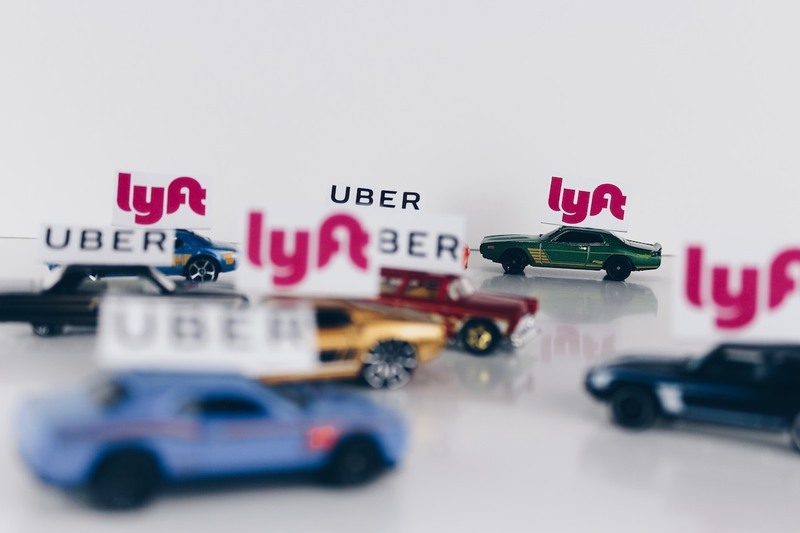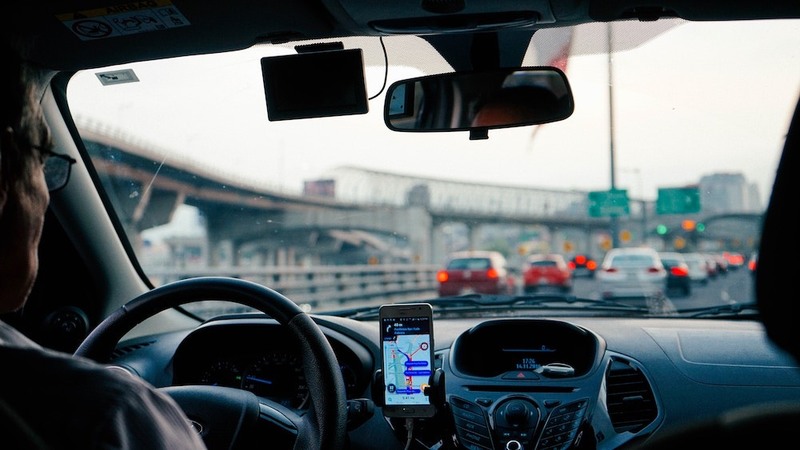Just a few years ago, there was a lot a passenger had to do in order to get from point A to point B: call the taxi service, wait for an available car (those who live in big cities know how big of a deal this is), and, finally, get in the cab and go to the destination (and you never know what kind of driver you will get: polite or rude, careful or careless, etc.).
Fortunately for all of us, the Uber mobile app appeared to save the day and provide a whole new level of customer service. There is probably no need to explain what it is and how it works – it so popular that even little children know about it.
So, more and more apps like Uber started flooding the market – their owners want to exceed or at least repeat Uber's success. In this article, we'll cover how to make an app like Uber, Lyft, Ola, GrabTaxi, Gett, etc. and the pricing of such software solutions.

How to Make a Taxi App: Creating Your Own Mobile Solution
Usually, if someone says they want to create a taxi booking app, they are talking about a mobile solution with standard functionality. In 99 out of 100 cases, they want to build an app like Uber that will have maps and location services for the user.
Would you like to get something similar to Uber? There's no surprise here – this app has been used by 75+ million users all over the world since 2012. As for the financial stats, the team who developed the Uber app raised over $11.5 billion from venture investors and foundations. This is why it is impossible to resist such a delicious idea as launching an Uber alternative on the market.
Considering that making it to the top and beating such powerful competitors as Uber is not a piece of cake, we suggest you take a look at the key stages of taxi app development and the minimum set of features for such software (of course, you can add your own unique features on top of them). Besides, you'll learn the answer to a very intriguing question: How much does it cost to make an app like Uber?
Stage 1: Market Research
As a rule, there is a standard stage you need to complete before taxi booking app development – market research and competitor analysis. True, the target audience has already been researched in detail by other companies (and you can see the results in the Uber app itself); however, skipping the analysis of competitor solutions, their benefits and drawbacks is not an option. Let us explain why.
In fact, such web apps started transforming the taxi booking industry in 2012 when Uber was launched. An application called Lyft, which is very similar to its prototype, was launched with time, and it's just one example of apps that want to be 'the next Uber'.
Therefore, to keep your head above the water and stay at the top of the search results page, you'll need a team of experienced professionals who will help you determine the winning combination of features. Usually, this stage takes business analysts 150-200 working hours to finish.
Stage 2: Design
As a rule, software usability for a wide target audience means its design and navigation should be as simple as possible. Developing the most primitive variation of such a design will take developers 90 hours or more.
Stage 3: Front-End Development
As you can understand from its name, this is the most costly stage in the development process (both in terms of finances and time). So, let's figure out what functionality you may need your app to have and what technology stack will come in handy:
- Location services. Developers use certain APIs for processing location data (Google Maps API or Google Places API will suit an Android app, and CoreLocation is your choice for iOS). This feature can be implemented relatively quickly, in 50-60 hours on average.
- Timer. A countdown that starts from the moment of ordering a taxi is implemented in a taxi booking app like Lyft using a custom timer. This feature will take approximately 50-70 hours.
- Online payments. To provide your users with an opportunity to pay for taxi services with a credit card, you will need to either create your own software solution for processing payments securely (which is quite complicated and requires complying with PCI DSS), or integrate your app with an already-made payment gateway (for example, Autorize.net). Read how to choose a mobile app payment gateway. This feature will take 100 hours on average.
- User profile. First of all, you need to remember that, in this case, you will have to create two types of user profiles with different variations of the dashboard: one for taxi users, and the other for drivers themselves. Each of them requires you to develop main fields that the user has to fill out (contact details, photo, rating, etc.). You should also consider simplified authorization – for instance, using social media accounts (you can add them using Facebook’s OAuth, Google’s OAuth2, and other relevant APIs). All of this can take approximately 120 working hours.

Afterwards, if you want to, you can add useful (though not obligatory) features to your app, such as:
- Multilingual support. If your app is created for the widest target audience possible, supporting several languages will come in handy. Adding a new language version will take developers approximately 100-120 hours.
- Rating system and user reviews. You are likely to have to create a tool for mitigating the risks for your future users and managing the quality of the services provided by a certain driver. Just add a rating system that will contain real reviews of particular drivers to your app. This will take 60-80 hours to implement.
- Online chat. You can provide your users with the ability to communicate with drivers online. Adding this feature is quite easy and inexpensive – it will take just 40 hours, more or less.
- In-app calls. This is one more simple feature that allows significantly improving the quality of customer experience. Implementing it will take approximately 20 hours.
- Monetization tools. As all software solutions of this kind are free, you need to figure out how to monetize it. The most obvious (and simple) way to make a profit is to add advertisement blocks or in-app purchases. It will take around 20-30 hours.
Note: all our recommendations for choosing the Uber technology stack for Uber-clone development are based on the assumption that you will create a separate app for each platform. So, if you want to launch your app on both Android and iOS, you should multiply all the estimations related to front-end development by two. If you need a more cost-efficient option, you can choose cross-platform development (with the help of React Native or any other framework used by your development company).
Read also: React Native vs Native Mobile App Development
Stage 4: Back-End Development
Such software solutions are usually created for a wide target audience. Besides, the fact that drivers move at high speed adds more complications, as the app has to react to these movements.
Therefore, back-end development has to be thorough – most likely, developers will have to divide the workload between several servers or process it in the cloud. This stage will take approximately 400 hours.
Stage 5: User Testing
After all development tasks are finished, the app should be tested by real users. Fortunately, this is a piece of cake for mobile software owners. For instance, when you upload your app to Google Play, you can choose alpha or beta testing sections. This means that only testers will have access to the app.
As for App Store, there is no such option. However, there's no reason to get upset – you can use a software tool for beta testing created by Apple developers. This stage usually takes 2-4 months.
Stage 6: Launch and Promotion
How do you start a company like Uber? Obviously, to make your Uber-like application widely known, you need to promote it. Famous mobile platforms already use advanced AI-based algorithms to optimize the search results according to user background.
Nevertheless, to get to the top of the search results page, you need to get your app downloaded as many times as possible within the shortest possible time. Achieving this without a marketing campaign is not just difficult – it is impossible. This is why mobile app owners turn to marketing specialists.
The marketing budget can vary significantly, so the cost of this stage can be calculated only after you discuss your particular business case with marketers.
Stage 7: Technical Support
Even if the app was tested thoroughly and meticulously, users will find some bugs after its release. It's just inevitable. This is not the testers' fault – apps are so complicated nowadays that revealing all the bugs in code immediately is impossible. This is why apps are regularly updated – developers add new features, adapt to new technologies, and fix bugs.
In order to make updates in time, you will need to employ technical support and maintenance services. Basically, you purchase a certain number of working hours that will be spent on updating your app and/or fixing bugs.
Read also:
In Conclusion
In this article, we aimed to answer one particular question: How do you make a taxi app? We also gave some insights on how to calculate the cost of developing an app like Uber.
Now it is up to you to choose the development team that will make your app a reality. Even though there are tons of already-made tools for building such software solutions, using them to create a taxi app that is ready-to-use with user-friendly interface is quite a challenge, even for an experienced developer.
This is why you should entrust only true professionals with this endeavor. Our team from Ukraine is ready to make you a proposal you won't be able to resist. As a result of our cooperation, you will get a solution that is ready to be used by its target audience and stand off against its competitors in 8-12 months.
Now it is up to you to choose the development team that will make your app a reality. Even though there are tons of already-made tools for building such software solutions, using them to create a taxi app that is ready-to-use with a user-friendly interface is quite a challenge, even for an experienced developer.
Let's discuss your project and find a perfect solution.







